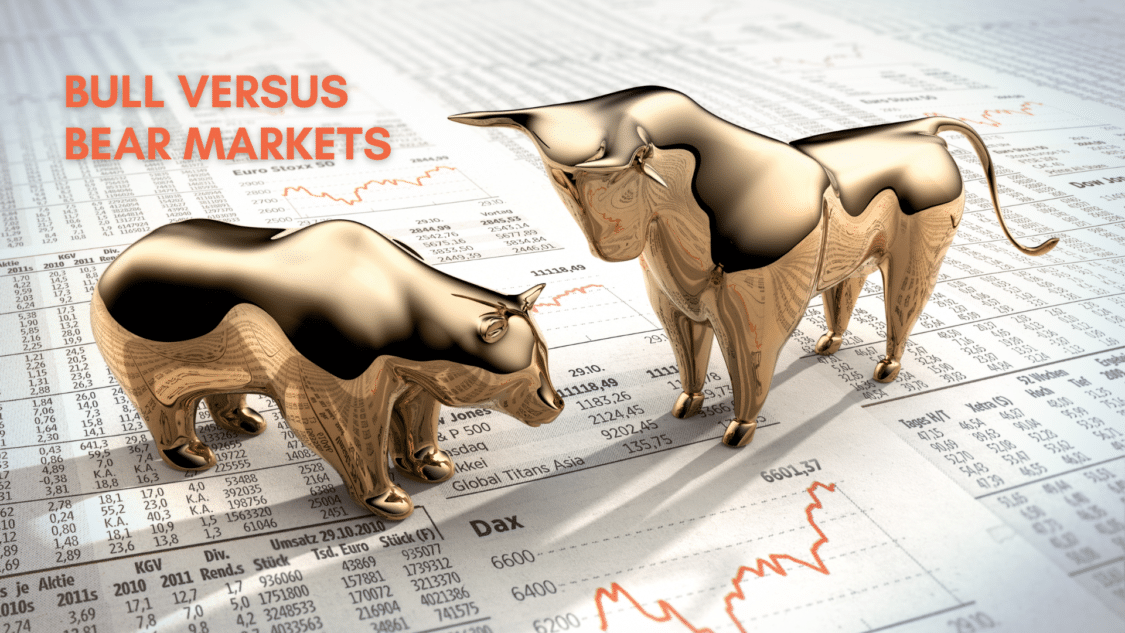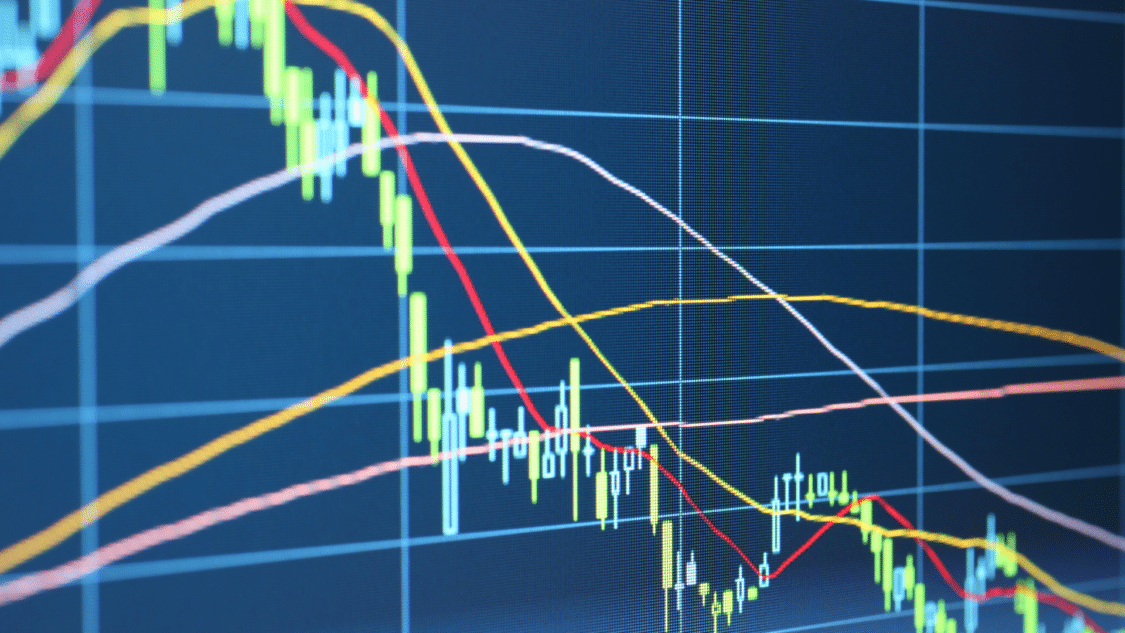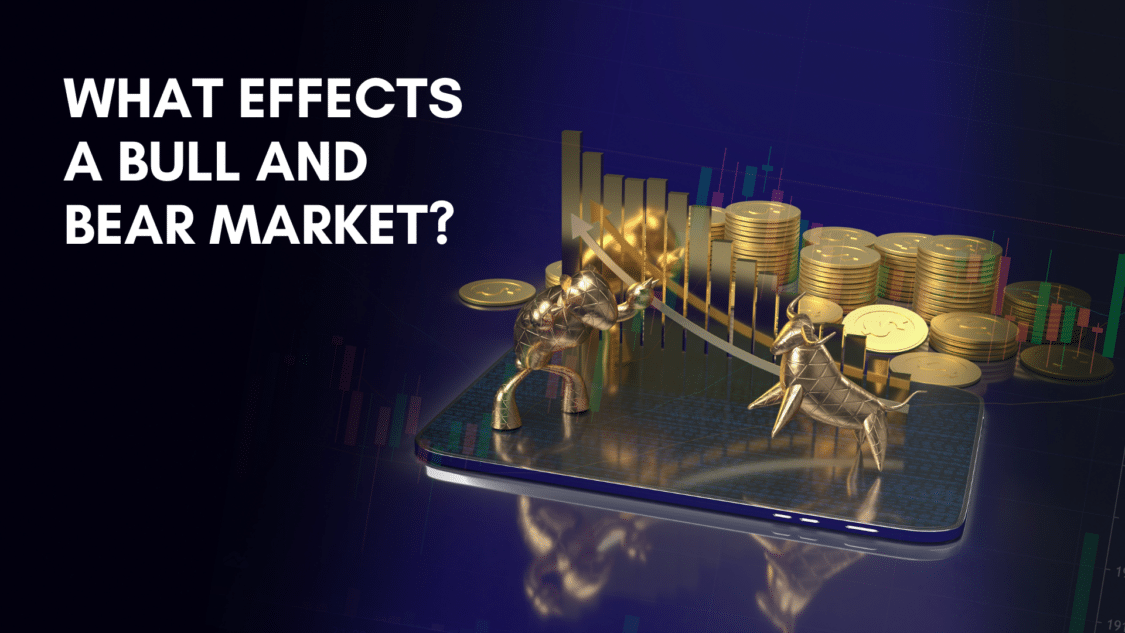
Time to cover the differences between Bull Versus Bear Market. A persistent increase in price defines a bull market, whereas a bear market is characterised by sustained periods of declining stock prices — generally by 20% or more. The terms and the message they give away are essentially from the animals. A bull usually attacks by thrusting its horns in the air, whereas a bear attacks when in fear. Therefore, if the market trend is going upward, it is a bull market; if it’s going downwards, it is a bear market.
The Phases:
The two markets we previously discussed consist of four phases. Expansion, peak, contraction, and trough.

- Expansion: During the expansion phase of the bull versus bear market, the two experience an upward trend. In a bull market, there is a general feeling of optimism due to rising prices. In addition, market participants are eager about potential gains and actively participate in buying assets. This phase is characterized by significant relief for traders in a bear market, as this is where prices temporarily rise before continuing the downward trend.
- Peak: The peak characterizes the end of the expansion phase and is the highest point achieved by prices in a bull market. With market players anticipating future price gains, it provides a state of ecstasy and great optimism. However, in a bear market, the peak signifies a transition from temporary relief to an overall downward trend. Market participants may view the peak as an opportunity to sell or exit positions before further declines.
- Contraction: Following the peak, both bull versus bear market enter a contraction phase. In a bull market, this phase is defined by a period of consolidation, where prices can experience a temporary decline or a sideways trend. Market sentiment shifts from excitement to caution as investors reassess their positions. In a bear market, the contraction phase continues the overall downward trend, with prices dropping even further. Fear and discouragement conquer market sentiment during this phase.
- Trough: The trough represents the lowest point prices held in a bear market. It signifies a period of extreme pessimism and despair among market players. However, in a bull market, the trough represents a transition from the contraction phase to a new upward trend. Prices stabilize, and market sentiment gradually shifts from caution to optimism. The trough presents a potential buying opportunity for investors looking to enter or add to their positions.
These four phases are essential to be familiar with as a trader. They can help traders and investors navigate the bull and bear market dynamics. Recognizing the signs and characteristics of each phase allows market participants to adjust their trading strategies, manage risk, and capitalize on potential opportunities. It’s important to note that the duration and intensity of each phase can vary, and market cycles are subject to various external factors and events that can influence their progression.
The Differences – Bull Versus Bear Market:
A bull market is when people who invest think that the prices of stocks will go up, so they buy more stocks and hope they made the right decision. The investor’s assumptions about the market impact the prices themselves. On the other hand, a bear market happens when investors start to lose faith and eventually collapse. They create a downward spiral because they believe prices will continue falling. Bear markets usually don’t last long. These terms don’t necessarily relate to the specific event but rather to the long-term state of the market.
Small movements don’t determine the nature of the market. Bull markets are typically associated with periods of strong economic growth; investor confidence is rising, employment levels are high, and the economy is strong. While during the bearish phase, there’s an economic downturn and a rise in unemployment.
Is it better to buy stocks in a bull versus bear market?
The decision to purchase stocks in a bull or bear market depends on various factors. In a bull market, as stock prices are generally on an uptrend, there is potential for capital appreciation and growth. Investors may find opportunities to buy stocks that have the potential to perform well. The positive market sentiment and increased buying activity during a bull market contribute to favourable stock price conditions.
There are opportunities to purchase stocks at reasonable prices during a bear market when stock values are declining. Investors can use the lower valuations to reach quality companies at attractive prices, expecting long-term investment gains. Additionally, bear markets may offer higher dividend yields, making dividend-paying stocks more attractive for income-oriented investors.
What effects a bull versus bear market?

- Supply and Demand: The economic principles of supply and Demand play a significant role in characterizing a bull or bear market. During a bullish market period, stocks or other assets are subject to high Demand primarily due to optimistic investor sentiment and favourable economic conditions. This increased Demand boosts the available supply, leading to upward price movements. Conversely, during a bear market, there is generally an increased supply of goods and services in relation to the Demand, typically attributed to unfavourable economic circumstances or pessimistic investor sentiment. An abundance of available goods results in a decrease in prices.
- Changes in Economic Activities: Economic activities, such as corporate earnings, interest rates, and employment levels, can highly affect bull and bear markets. In a bull market, favourable economic conditions, such as rising corporate profits and low-interest rates, can boost investor confidence. These positive economic indicators create a supportive environment for stock prices to grow. In contrast, a bear market is often associated with economic downturns, declining corporate earnings, higher interest rates, or other negative factors. These challenges can negatively affect investor sentiment, leading to selling pressure and decreasing stock prices.
- Investors’ Psychology: Investor psychology and sentiment can highly impact market dynamics. In a bull market, positive feelings persist as investors are optimistic about the future and believe that stock prices will increase. This optimism can lead to increased buying activity and further drive prices up. Nonetheless, during a bear market, pessimistic sentiment prevails among investors as uncertainty arises regarding the market. A negative outlook may result in a high inclination to sell, intensifying the declining trend. The psychology of investors can be impacted by various influences such as economic news, geopolitical occurrences, fluctuations in the market, and the attitude of the market as a whole.
Understanding the connection between supply and Demand, changes in economic activities, and investors’ psychology is crucial for understanding the dynamics of bull and bear markets. These factors can influence market trends, asset prices, and investor behaviour. However, it’s important to note that market movements are complex and can be affected by additional factors, including government policies, regulatory changes, and unexpected events.
Key Considerations:
Bull markets are generally considered less volatile and perceive lower risk due to favourable market sentiment and upward price movements. However, it’s important to note that volatility can still exist within a bull market, and investors should remain cautious of potential market corrections. On the other hand, bear markets often exhibit higher volatility, making it crucial for investors to assess and manage risks during such periods carefully.
Market conditions like bullish or bearish trends significantly impact how investors behave. During a bull market, investors can develop a tendency to follow the crowd due to the fear of being left behind. This can result in investing in overpriced assets as a result of overenthusiasm. On the other hand, during a downward trend in the market, the emotions of fear and pessimism among investors may trigger a frantic sell-off of assets, further worsening the decline. To succeed in investing under any circumstance, it is crucial to thoroughly comprehend how investors behave and know how to manage it.
Closing Thoughts:
In conclusion, bull versus bear market are two separate phases in the financial market. They each characterize a unique dynamic and investor sentiment. Each of them possesses a distinct dynamic and separately influences investor sentiment. Ascending stock values, an optimistic market outlook, and augmented investor confidence characterize a bullish market. It usually arises due to favourable economic circumstances, strong corporate profits, and a substantial craving for stocks or other investments.
Conversely, a bear market is represented by falling stock prices, negative market sentiment, and careful investors. This market is usually driven by economic downturns, declining corporate profits, and low investor confidence.
Understanding the differences between a bull versus bear market is necessary for investors to navigate the markets effectively. It’s important to note that market conditions are due to change, and accurately predicting market movements can be challenging. Therefore, maintaining a diversified portfolio, conducting thorough research, and regularly reassessing investment strategies are essential in these markets. By staying informed, understanding market dynamics, and aligning investment decisions with individual goals and risk tolerance, investors can set themselves up for success.
For more news updates, visit our homepage now and see our latest news article. Want to learn more about trading? Visit our education page now and learn for FREE!

